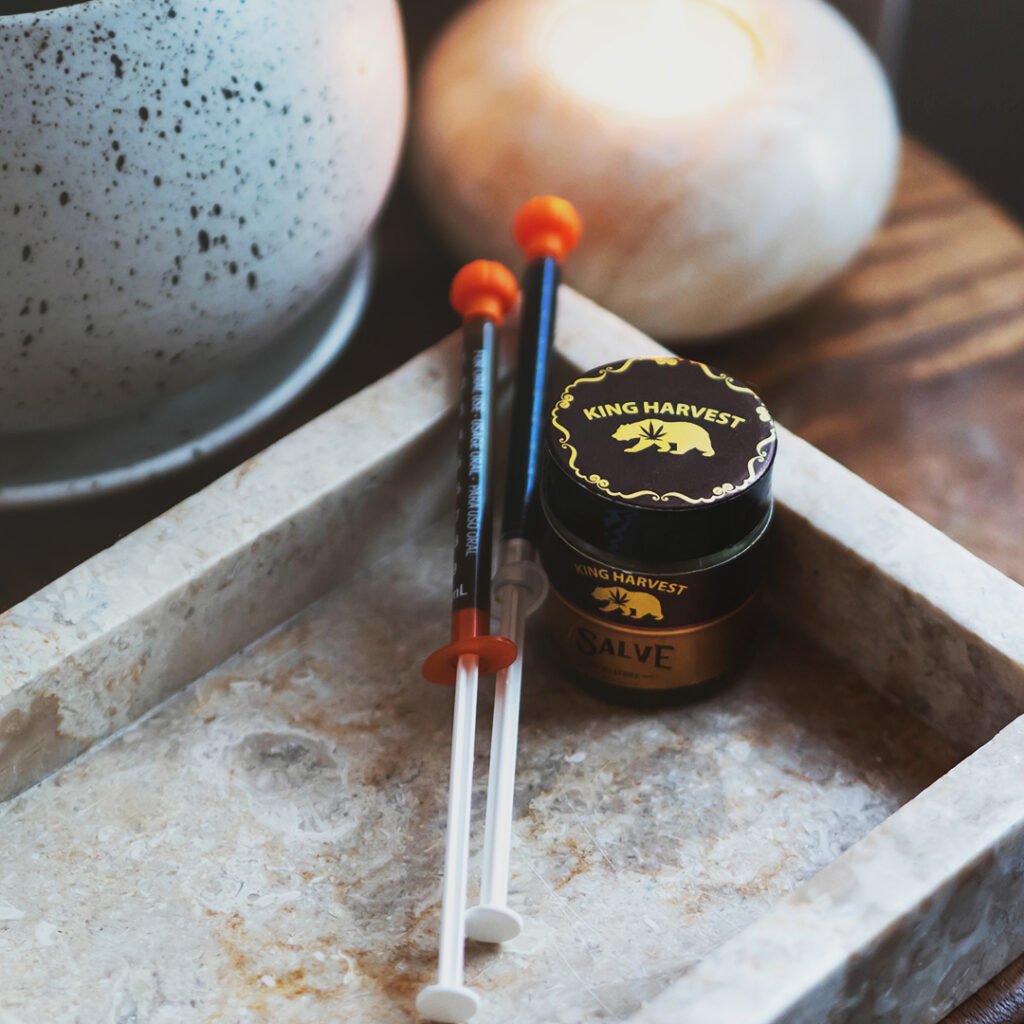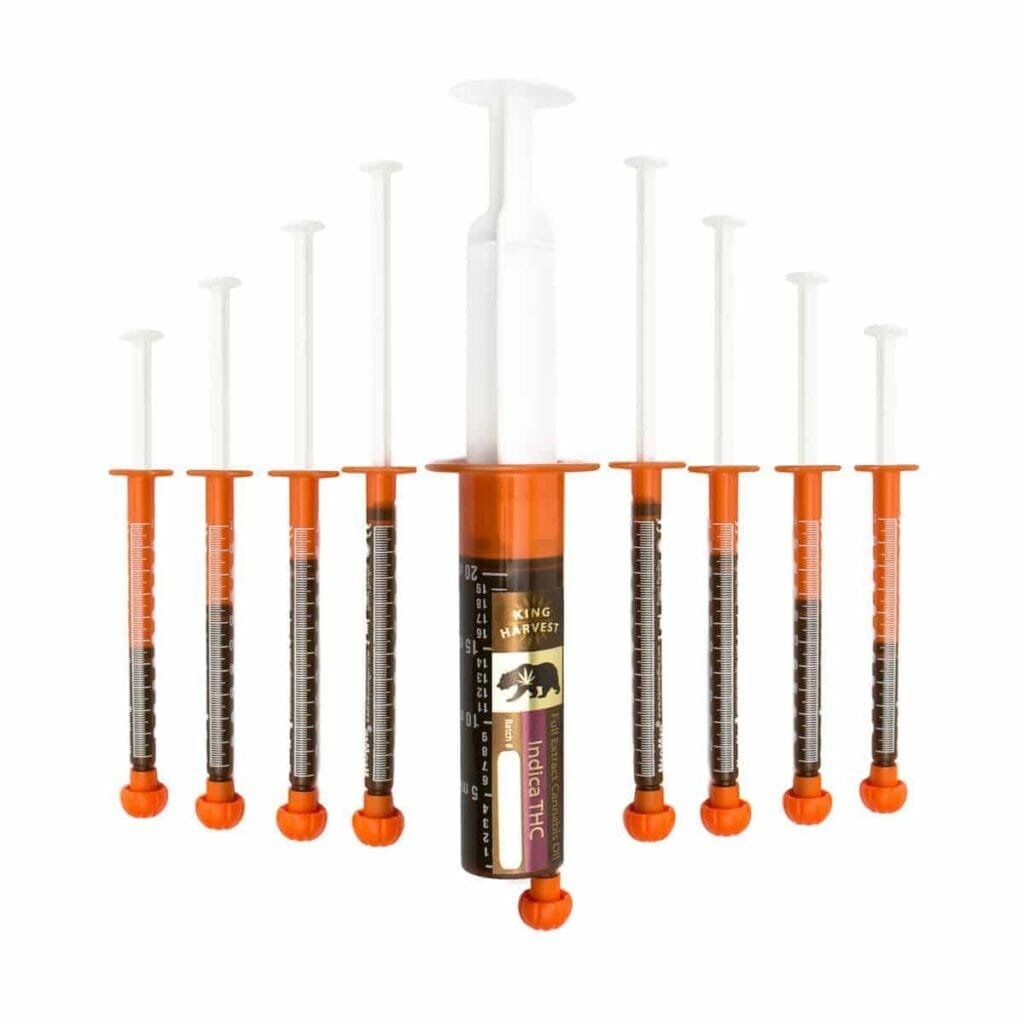FECO for Cancer Information – King Harvest provides FECO and other plant medicine. We are not doctors. What we have his a decade of compassionate use of plant medicine to address side effects of treatments.
FECO and Cancer
King Harvest’s FECO is full extract cannabis oil. This medicine represents a paradigm shift in cancer treatment. By harnessing the therapeutic potentials of cannabinoids and their interaction with the human endocannabinoid and endocrine systems, they offer a novel approach that not only targets the symptoms of cancer but also addresses its root causes. While their reported success rates are promising, further research and clinical trials are essential to fully understand and validate these findings.
Cannabis Oil and Cancer
Cannabinoids and the Human Body:
In the realm of alternative medicine, King Harvest has emerged as a vanguard, particularly in the use of medical cannabis oil for treating cancer. With over a decade of experience and having treated more than 60,000 patients overall, King Harvest has developed a nuanced understanding of the interaction between cannabinoids and cancer.
At the heart of King Harvest’s philosophy is the interplay between cannabinoids like THC (Tetrahydrocannabinol) and CBD (Cannabidiol), and the human body’s endocannabinoid system. This system, comprising CB1 and CB2 receptors, plays a pivotal role in maintaining homeostasis.
King Harvest’s treatment hinges on the idea that stimulating these receptors with cannabinoids can restore balance in the body, crucial in combating cancer. Stimulating these receptors within the affected areas of the body will have profound effects on a patients symptoms and greatly improve the success of the treatment overall.
The Entourage Effect: A cornerstone of King Harvest’s approach is the ‘entourage effect’ – the synergistic interaction of various cannabis compounds, including THC, CBD and other cannabinoids. This effect is believed to enhance the therapeutic potential of cannabis, particularly in shrinking the cellular blueprint, reducing inflammation, and thereby assisting the body in discerning and destroying cancer cells.
The company calls this a full spectrum, flower only and “Strain Specific” approach typing the chemical profile within the cannabis oil itself to different types of cancer based on the area of the body. When dealing with a critical illness setting the only responsible thing to do is to offer patients medicines that will give them the greatness chances of success. If we can provide patients with the necessary components they need to create the “Entourage effect” then they will have the greatest chance of success.
Key components for the Entourage effect:
To successfully create the entourage effect, King Harvest meticulously curates a treatment regime beginning with whole flower, high terpene cannabis, specifically chosen for its strain properties to target areas impacted by illness. Key to this process is an extraction method that remains free from toxins and chemicals, safeguarding the patient’s immune system. Understanding the crucial role of confidence in treatment success, King Harvest ensures that patients receive expert dosing guidance and supervision.
The personalized support given by the company is instrumental in fostering patient confidence, which is integral to successful outcomes. Additionally King Harvest reinforces trust and transparency by providing third party lab testing for all of their products, ensuring patients are assured of the quality and consistency of their medicines, eliminating the added stress of uncertainty. Each aspect of this approach is handled with thoroughness and responsibility, highlighting King Harvest’s commitment to effective and safe full spectrum cannabis oil treatments.
The Role of Cannbinoids
The discussion of the efficacy of medical cannabis cannot be complete without discussing THC’s Role: THC’s contribution extends beyond pain relief and is further enhanced when in the prescience of other cannabinoids also. The interplay of these connections is core to the root of this research with King Harvest. King Harvest’s research suggests that THC in the bloodstream can interact with mutated cells, inhibit metastasis, and aid in eradicating cancer from the body. This is particularly effective when whole molecule, organic cannabis oil is used, ensuring systemic impact.
When combined with other cannabinoids we see THC that becomes exponentially more powerful and useful in many aspects. Research further suggests that with the different kinds of cannabinoids in combination we can stimulate the system in different ways and achieve different results. Whole molecule or full spectrum Cannabidiol or “CBD” also has an important Impact: CBD has shown itself to be a plant steroid, reducing inflammation and ‘reminding’ the body of healthy cellular structures during cell replication. This chemical is vital in the creation of “Cellular Apoptosis” and further the “Entourage Effect” which is considered essential in treating all types of cancers.
Over time, this can lead to the body reverting to producing healthy cells and identifying and eliminating cancerous ones. CBD, THC and other cannabinoids interact in many important ways during the process of this treatment causing patients to heal. King Harvest studies these phenomenon on a patient by patient basis – one patient at a time, with the goal of replicating this for all patients across all types of illness and disease.
CBD Molecules extracted specifically from the ACDC plant have been shown to be a vital part of a necessary chemical profile as they have shown themselves to be the most useful in stimulating CB! And CB2 receptors.
Many of these modalities are specific to the treatment of cancer and are the area of largest focus for King Harvest. Different areas of the body are stimulated by different strains with different chemical and terpene profiles which is why we have created the concept of studying “strain specific” cannabis which is useful for different types of remedies and different types of disease.
King Harvest has noticed that different strains are useful for different types of cancer in different areas of the body by virtue of studying patient cases and simply trying different types of oils to help assist patients find success. After extensive study over a ten year period of time we see that different types of cannabis are not only good for different types of illness but we see that different types of cannabis oils with different terpene profiles will have different effects on different types of cancers directly.
Cannabidiol or “CBD’s” also has an important Impact: CBD has shown itself to be a plant steroid, reducing inflammation and ‘reminding’ the body of healthy cellular structures. Over time, this can lead to the body reverting to producing healthy cells and identifying and eliminating cancerous ones. CBD Molecules extracted specifically from the ACDC plant have been shown to be part of a chemical profile that will remind the body exactly how to replicate healthy cells again while simultaneously assisting in the destruction of the existing cancer cells as well.
Additionally cannabis oils will assist in fostering changes in the Endocrine System which is responsible for hormone regulation and is crucial in maintaining body balance. We all know that these imbalances, when profound enough will eventual lead to critical illness and disease. By stimulating the endocannabinoid system, cannabis oil is posited to indirectly influence the endocrine system, thereby reducing inflammation, balancing hormone levels, and aiding in the fight against cancer. The combination of re-establishing healthy cell replication while simultaneously balancing hormone regulation in the endocrine system is the “combinational effect” of treatment that is always present when patients begin experiencing miraculous results that go beyond explanation.
King Harvest’s Experience and Patient Outcomes
With over 10 years of experience, King Harvest has treated a wide array of cancer types, tailoring treatments to individual needs. Their approach involves determining the specific chemical and terpene profiles suitable for different cancers, thereby maximizing efficacy. Remarkably, King Harvest reports that 63% of their patients experience significant relief and/or improvements, with the cancer either becoming manageable or undetectable.
This success rate is notably higher than the approximate 14% survivability / success rate offered by conventional Western treatments. When cannabis oils are combined with western medicines then success rates go up even higher. It is also clear that properly made cannabis oils will protect patients from the toxic side effects of pharmaceuticals and other therapies like radiation and chemotherapy.
King Harvest’s cannabis oil treatments are show to be safer, more effective, and less expensive alternatives to traditional cancer therapies. We further argue that cannabis oil treatments come without the severe side effects often associated with chemotherapy and radiation. The statistical evidence that cannabis oil can change the prognosis of cancer to a manageable condition in a majority of cases is a striking testament to its potential as a therapeutic agent. This is contrasted with the lower efficacy rates of traditional treatments.
King Harvest’s commitment to quality and transparency is why many doctors choose to work hand in hand with us directly. King Harvest is committed to a team oriented approach that puts the needs of the patient needs ahead of anything for anyone else; including and especially the patients doctor. This open but supervised approach fosters trust, education and the patient’s empowerment which is hugely beneficial when trying to heal.
What other questions do you have?

Unlocking the Potential of Full Extract Cannabis Oil
In the realm of cannabis extracts, Full Extract Cannabis Oil (FECO) stands out as a powerhouse, encapsulating the therapeutic essence of the cannabis plant in a concentrated form. This potent oil provides a robust blend of cannabinoids, terpenes, and diverse plant compounds making it a focal point in the realm of medicinal cannabis extracts.
What’s in FECO?
FECO is a concentrated oil derived entirely from the cannabis plant. Our extraction process involves soaking the cannabis plant material in a natural solvent to extract all the benefits of the plants. The solution is then filtered and purged of solvent leaving behind a potent elixir of therapeutic compounds including cannabinoids, terpenes, flavonoids, and other phytochemicals.



